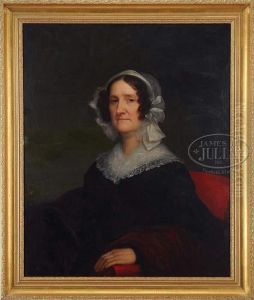Albert G. Hoit Paintings
Albert Gallatin Hoit was an American painter born in 1809, in North Sandwich, New Hampshire. He developed a profound interest in art at a young age, which was nurtured through his early career. Hoit is primarily remembered for his contributions to portrait painting in the 19th century, capturing the likenesses of prominent figures of his time. His style was characterized by its detailed realism and depth, traits that made his work highly sought after by the American elite.
Hoit's education in art was largely self-taught, supplemented by apprenticeships and possibly brief periods of study under established artists of the era. The lack of formal art education did not hinder his career; rather, it propelled him to refine a unique style that resonated with his contemporaries. By the 1830s, Hoit had established himself as a reputable portraitist in New England, and his clientele included politicians, businessmen, and socialites.
In addition to his portraits, Hoit's oeuvre includes a few landscapes and historical scenes, though these are less known and were not the primary focus of his career. His work as a portraitist is notable for its attention to detail, capturing not just the physical likeness but the personality and essence of his sitters. This ability made him a preferred artist among those wishing to leave a legacy through their portraits.
Albert G. Hoit's life was relatively short; he died in 1856, leaving behind a legacy of art that offers insight into the faces and personalities of 19th-century America. His portraits remain valuable for their historical significance as well as their artistic merit, providing a window into the era's cultural and social hierarchy. Hoit's work is preserved in several American museums and historical societies, continuing to attract interest for their portrayal of an evolving American society.

